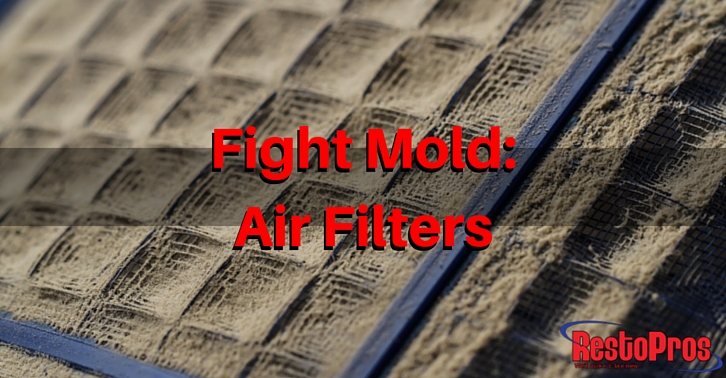 The reason that mold is so prevalent is the fact that it is constantly reproducing by releasing airborne spores. Mold spores are everywhere and as the concentration increases the more likely it is that one or more of these spores are going to find a purchase point somewhere and take root. Air filters are one of the best defenses against this since they trap these spores, allowing you to dispose of them before they spread throughout your home. Actually it’s a good idea to replace the air filter in your home every 3 months just to keep your air clean.
The reason that mold is so prevalent is the fact that it is constantly reproducing by releasing airborne spores. Mold spores are everywhere and as the concentration increases the more likely it is that one or more of these spores are going to find a purchase point somewhere and take root. Air filters are one of the best defenses against this since they trap these spores, allowing you to dispose of them before they spread throughout your home. Actually it’s a good idea to replace the air filter in your home every 3 months just to keep your air clean.
Types of Filters
- Fiberglass
- Polyester
- Electrostatic
- High Efficiency Particulate Arrestance (HEPA)
- Washable
Ratings and Costs
You have two different methods to select the type of air filter in your home: Select for efficiency or cost The size and shape of your filter is based on your current ventilation system, so there’s nothing to be decided there. The rest is a balance of how much you want to spend on a filter compared to how sensitive you are to airborne contaminants.
Filters come in two different types: disposable and washable. Most filters used by residences are of the disposable type. Washable filters have the benefit of being reusable, by they typically have low Minimum Efficiency Reporting Values (MERV). MERV ratings are a simple number between 1 and 20 that identifies how effective a filter is at removing particles from the air.
Fiberglass – Flat panel fiberglass filters are the most common filters for homes and apartments. They’re effective at removing dust, large pollens, and pet hair from the air but aren’t the most effective filter on the market. The inexpensive $1-2 price tag per filter makes them easily affordable however.
Electrostatic – These filters use an electrostatically-charged cotton to capture smaller particles and pollutants. They’re especially well-designed for homes with smokers or pets, as they’re capable of collecting particulates that a standard fiberglass filter will miss. They’re more expensive however, averaging $10.
Pleated Polyester – Unlike the previous two filters, polyester-based filters are folded into pleats. These pleats increase surface area, helping to push the MERV rating for a polyester air filter up into the 10-14 range. The increased surface area allows for a higher rate of air flow while still cleaning up the air as it passes through. If you want the best balance of cleaning power and cost, polyester filters are the way to go.
HEPA – Hardy, long lasting (they require replacement every year instead of every 3 months) and sporting an almost perfect MERV rating, HEPA filters are the most expensive on this list. Unfortunately, the major drawback is that they use a non-standard form factor. Unless your ventilation system is designed to use a HEPA filter, it won’t fit. These filters are standard for environments which require top-tier filtering, such as hospitals.
UV Filters
Ultraviolet (UV) filters are at the forefront of mold- and spore-fighting technology. Harnessing the biological fighting power of UV-C, a UV air filter exposes the air in your ventilation system to a blast of UV that destroys biological contaminants. This includes mold spores and airborne bacteria. UV filters don’t work on dust though since dust is inorganic. That means it’s best to pair the two together for added effect.
Don’t forget to follow RestoPros on Facebook, Twitter, LinkedIn, and Google+ for new Updates, News, and Discounts!
